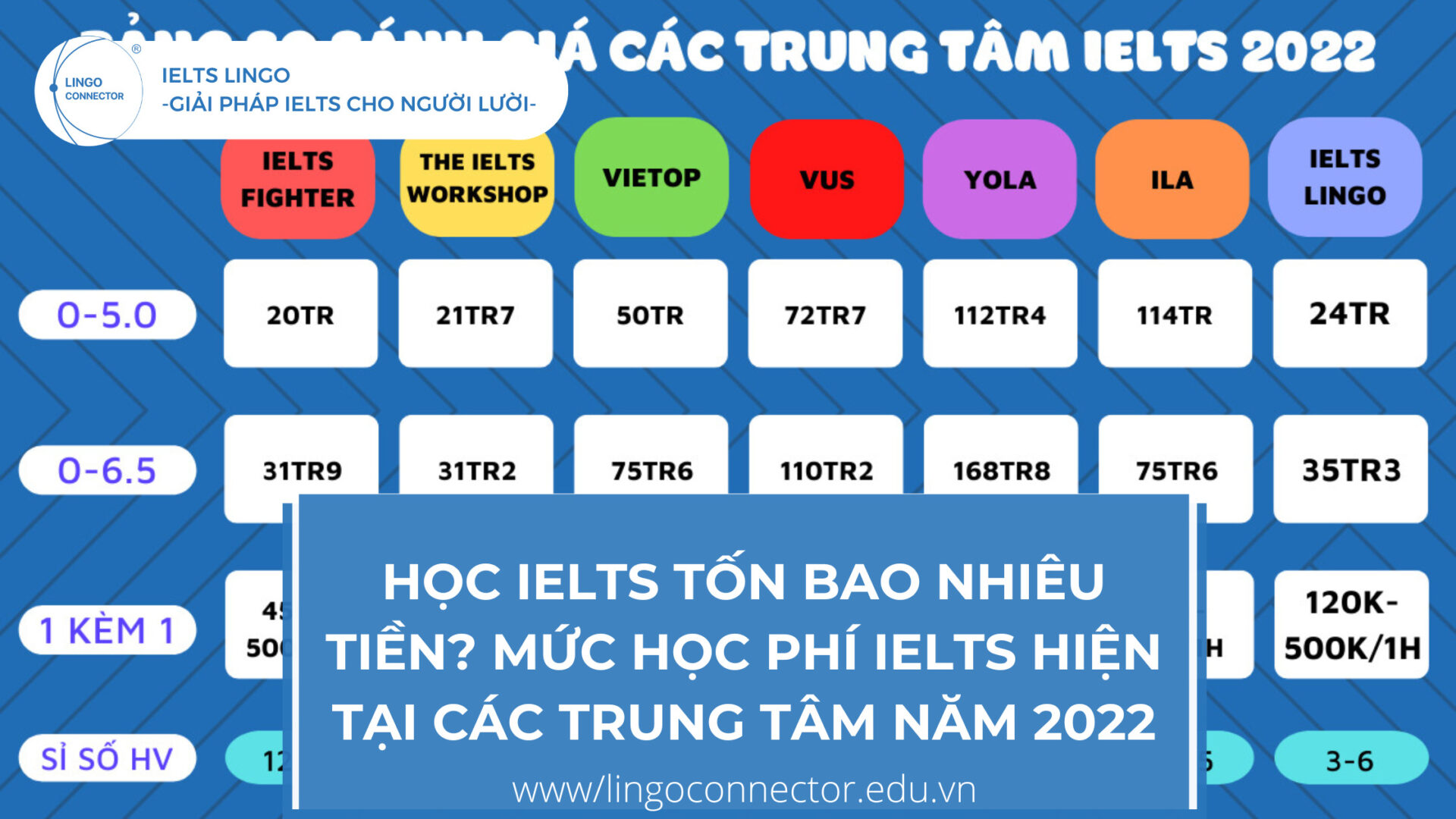I. Mạo từ THE là gì ?
Mạo từ “The” còn được gọi là mạo từ xác định (dedinite article), dùng để xác định cho danh từ đếm được và danh từ không đếm được, cả số ít lẫn số nhiều.
Mạo từ The luôn đứng trước những danh từ đã được xác định, là những danh từ mà người đọc sẽ biết được chính xác đối tượng được nhắc tới.
Mạo từ The luôn đứng trước những danh từ đã được xác định, là những danh từ mà người đọc sẽ biết được chính xác đối tượng được nhắc tới.
II Cách dùng mạo từ The
1. Những đối tượng duy nhất
VD:
• The Pope : Đức Giáo Hoàng
• The Sun : mặt trời
• The Queen of England : Nữ Hoàng Anh
• The Moon: mặt trăng
VD:
• The Pope : Đức Giáo Hoàng
• The Sun : mặt trời
• The Queen of England : Nữ Hoàng Anh
• The Moon: mặt trăng
2. Trước danh từ đã được đề cập trước đó.
VD:
VD:
- I saw a beggar. The beggar looked curiously at me.
- A boy felt down from a tree. An ambulance is taking the boy to the hospital
3. Trước danh từ đã được xác định bằng một cụm từ hoặc một mệnh đề.
Ví dụ:
Ví dụ:
- The girl in uniform
- The mechanic that I met
- The place where I waited for him
4. Trước danh từ chỉ một vật riêng biệt, đã xác định
VD:
- My father is working in the garden
- Please pass the dictionary
5. Dùng với những từ “first”, “second”, “only” …
VD:
- The first day
- The best time
- The only way
- The first to discover this accident
6. Dùng với danh từ có thể mô tả chúng cho cả loài.
VD:
- The whale is in danger of becoming extinct
- The fast food has made life easier for housewives.
- The snake is a dangerous animal
7. Dùng với adj để chỉ 1 nhóm người, một tầng lớp trong xã hội
VD:
- The small shopkeeper is finding business increasingly difficult
- The gap between the rich and the poor is big.
- The city should help the disabled more.
- The old
- The rich and the poor
8. “The” dùng Trước những danh từ riêng
– Dùng để chỉ những người của một nước
VD: The Vietnameses, The Netherlands
– Những vị trí địa lý như dãy nuí, đảo, đại dương, kênh đào
VD: The Himalayas, The Pacific Ocean, The Panama Canal.
VD: The Himalayas, The Pacific Ocean, The Panama Canal.
– Những công trình kiến trúc nổi tiếng
VD: The Eiffel Towel, The Forbidden Palace
VD: The Eiffel Towel, The Forbidden Palace
– Những tổ chức
VD: The United Nation, The ASEAN
VD: The United Nation, The ASEAN
– Những chuỗi khách sạn hoặc nhà hàng
VD: The Ritz Carlton, The Marriott
VD: The Ritz Carlton, The Marriott
9. The + N + of + N
VD:
VD:
- The Gulf of Mexico
- The United States of America
- The north of Spain
10. Dùng trong câu so sánh
VD:
VD:
- The most beautiful girl
- The highest mountain in the world
11. Dùng với một dòng họ mang nghĩa là Gia đình
VD:
- The Smiths
- The Williams
- The Obamas
III. Các trường hợp không dùng mạo từ THE
1. Trước tên châu lục, tên quốc gia, tên đường, tên núi, tên hồ
Ví dụ:
Asia (Châu Á), Japan (Nhật Bản), Wall Street (Phố Wall), Himalayas (Núi Himalaya), Windermere (Hồ Windermere)
Ví dụ:
Asia (Châu Á), Japan (Nhật Bản), Wall Street (Phố Wall), Himalayas (Núi Himalaya), Windermere (Hồ Windermere)
2. Trước danh từ không đếm được hoặc danh từ số nhiều ở nghĩa chung nhất
Ví dụ:
– I don’t like eating rice (Tôi không thích ăn cơm)
– I love Sundays (Tôi yêu những ngày chủ nhật)
Ví dụ:
– I don’t like eating rice (Tôi không thích ăn cơm)
– I love Sundays (Tôi yêu những ngày chủ nhật)
3. Trước danh từ trừu tượng, trừ phi danh từ đó chỉ một trường hợp cá biệt.
Ví dụ:
– I fear ghost (Tôi sợ ma)
Tuy nhiên nếu đằng sau danh từ trừu tượng có “of” thì sẽ dùng “the”
– The Ghost Of Paul Revere: Tên một ban nhạc đồng quê ở Portland
Ví dụ:
– I fear ghost (Tôi sợ ma)
Tuy nhiên nếu đằng sau danh từ trừu tượng có “of” thì sẽ dùng “the”
– The Ghost Of Paul Revere: Tên một ban nhạc đồng quê ở Portland
4. Sau tính từ sở hữu hoặc sau danh từ sở hữu cách
Ví dụ:
– My mother, chứ không nói My the mother
– Lucy’s mother = the mother of Lucy (Mẹ của Lucy)
Ví dụ:
– My mother, chứ không nói My the mother
– Lucy’s mother = the mother of Lucy (Mẹ của Lucy)
5. Trước tên gọi các bữa ăn.
Ví dụ
– Do you want go out for lunch? (Bạn muốn ra ngoài ăn trưa không?)
Tuy nhiên, khi bữa ăn đó được xác định thì sẽ dùng mạo từ “the”
– The birthday dinner will be served, hope to see you there.
(Bữa tiệc sinh nhật tối sẽ được phục vụ, hy vọng Bạn có mặt ở đó.)
Ví dụ
– Do you want go out for lunch? (Bạn muốn ra ngoài ăn trưa không?)
Tuy nhiên, khi bữa ăn đó được xác định thì sẽ dùng mạo từ “the”
– The birthday dinner will be served, hope to see you there.
(Bữa tiệc sinh nhật tối sẽ được phục vụ, hy vọng Bạn có mặt ở đó.)
6. Trước các tước hiệu
Ví dụ:
– President Obama (Tổng thống Obama)
– First Lady of the United States (Đệ nhất Phu nhân của nước Hoa Kỳ)
Ví dụ:
– President Obama (Tổng thống Obama)
– First Lady of the United States (Đệ nhất Phu nhân của nước Hoa Kỳ)
7. Trong các trường hợp sau đây
– Sau “be fond of”: I am always fond of sports (Tôi thích thể thao)
– Sau “by” để chỉ phương tiện: by car/by bike/by hand (Bằng xe hơi/ bằng xe đạp/ bằng tay)
– Danh từ chỉ mùa, thời gian, phương hướng đứng sau trạng từ: In winter (Vào mùa đông), last year (năm ngoái), next week (tuần tới), from beginning to end (từ đầu tới cuối), from north to south (từ bắc chí nam).
– Danh từ chỉ trò trơi đứng sau động từ “play”: To play guitar/volleybal (chơi ghita/bóng chuyền)
– Sau “be fond of”: I am always fond of sports (Tôi thích thể thao)
– Sau “by” để chỉ phương tiện: by car/by bike/by hand (Bằng xe hơi/ bằng xe đạp/ bằng tay)
– Danh từ chỉ mùa, thời gian, phương hướng đứng sau trạng từ: In winter (Vào mùa đông), last year (năm ngoái), next week (tuần tới), from beginning to end (từ đầu tới cuối), from north to south (từ bắc chí nam).
– Danh từ chỉ trò trơi đứng sau động từ “play”: To play guitar/volleybal (chơi ghita/bóng chuyền)
IV. Hai bước để tránh dùng sai mạo từ trong lúc writing
Mỗi khi bạn dùng mạo từ, hãy tự trả lời câu hỏi sau
Danh từ đã xác định chưa?
Sử dụng mạo từ The khi đối tượng đã được xác định, cụ thể hóa. Nếu chưa thì việc dùng mạo từ The sẽ không đúng.
VD:
VD:
- Pollution is one of the major problems facing manking in the 21st century
- The air pollution is caused by factories.
Thì ở vd 1 thì “pollution” quá chung, có nhiều loại ô nhiễm trên trái đất nên không dùng mạo từ The, trong khi đó ở vd 2 thì chỉ đề cập cụ thể 1 loại ô nhiểm là ô nhiễm không khí nên sẽ dùng mạo từ The.
V. Cách sửa lỗi mạo từ THE giúp nâng điểm WRITING
1. Danh từ đã xác định thì dùng mạo từ “The”
Nếu Bạn dùng danh từ chung chung thì không cần “The”, Bạn dùng “The” nói về một thứ gì đó Bạn đã rõ, cụ thể hoặc muốn thu hẹp phạm vi của danh từ.
Ví dụ:
I took a bus to Paris. (Tôi đã bắt xe buýt đi Paris), ở đây Bạn nói về một chuyến xe buýt chung chung, không chính xác là chuyến nào.
The bus was 15-minute late. (Chuyến xe buýt đó trễ tận 15 phút), chuyến xe buýt trễ 15 phút này được xác định cụ thể
Nếu Bạn dùng danh từ chung chung thì không cần “The”, Bạn dùng “The” nói về một thứ gì đó Bạn đã rõ, cụ thể hoặc muốn thu hẹp phạm vi của danh từ.
Ví dụ:
I took a bus to Paris. (Tôi đã bắt xe buýt đi Paris), ở đây Bạn nói về một chuyến xe buýt chung chung, không chính xác là chuyến nào.
The bus was 15-minute late. (Chuyến xe buýt đó trễ tận 15 phút), chuyến xe buýt trễ 15 phút này được xác định cụ thể
2. Dùng The khi nhắc đến danh từ ở lần thứ 2
Ở lần đầu tiên khi nhắc đến một danh từ, Bạn sẽ dùng mạo từ a/an, nhưng ở những lần sau, Bạn phải dùng mạo từ “The” vì danh từ đó đã xác định.
Ví dụ:
She had an appointment with Doctor John. The appointment took her 2 hours.
Ở lần đầu tiên khi nhắc đến một danh từ, Bạn sẽ dùng mạo từ a/an, nhưng ở những lần sau, Bạn phải dùng mạo từ “The” vì danh từ đó đã xác định.
Ví dụ:
She had an appointment with Doctor John. The appointment took her 2 hours.
3. Một số ngoại lệ
– Với bệnh viện, nếu nhắc đến chung chung, Anh-Anh không có ‘The”, Anh-Mỹ vẫn có “The”
Tim is in hospital (UK) / in the hospital (US).
– Với các loại cửa hàng mà Bạn quen thuộc và thường xuyên mua sắm thì dùng “The”
Anna and I will go to the supermarket this sunday.
– Với bệnh viện, nếu nhắc đến chung chung, Anh-Anh không có ‘The”, Anh-Mỹ vẫn có “The”
Tim is in hospital (UK) / in the hospital (US).
– Với các loại cửa hàng mà Bạn quen thuộc và thường xuyên mua sắm thì dùng “The”
Anna and I will go to the supermarket this sunday.
VI. Bài tập áp dụng với mạo từ xác định THE
Exercise 1: Điền mạo từ thích hợp vào các chỗ trống
(1)………diagram explains the way in which bricks are made for the building industry. Overall, there are seven stages in the process, beginning with the digging up of (2)……..clay and culminating in delivery.
To begin, (3)…….clay used to make the bricks is dug up from the ground by (4)………large digger. This clay is then placed onto (5)……metal grid, which is used to break up (6)………clay into smaller pieces. (7)………… roller assists in this process.
Following this, sand and water are added to the clay, and this mixture is turned into bricks by either placing it into a mould or using (8)……..wire cutter. Next, these bricks are placed in (9)……..oven to dry for 24 – 48 hours.
In the subsequent stage, the bricks go through a heating and cooling process. They are heated in a kiln at a moderate and then a high temperature (ranging from 200c to 1300c), followed by a cooling process in a chamber for 2 – 3 days. Finally, (10)……….bricks are packed and delivered to their destinations.
Đáp án:
1. The – 2. x – 3. the – 4. a – 5. A – 6. the – 7. A – 8. a – 9. an – 10. The
(1)………diagram explains the way in which bricks are made for the building industry. Overall, there are seven stages in the process, beginning with the digging up of (2)……..clay and culminating in delivery.
To begin, (3)…….clay used to make the bricks is dug up from the ground by (4)………large digger. This clay is then placed onto (5)……metal grid, which is used to break up (6)………clay into smaller pieces. (7)………… roller assists in this process.
Following this, sand and water are added to the clay, and this mixture is turned into bricks by either placing it into a mould or using (8)……..wire cutter. Next, these bricks are placed in (9)……..oven to dry for 24 – 48 hours.
In the subsequent stage, the bricks go through a heating and cooling process. They are heated in a kiln at a moderate and then a high temperature (ranging from 200c to 1300c), followed by a cooling process in a chamber for 2 – 3 days. Finally, (10)……….bricks are packed and delivered to their destinations.
Đáp án:
1. The – 2. x – 3. the – 4. a – 5. A – 6. the – 7. A – 8. a – 9. an – 10. The
Exercise 2: Chọn đáp án đúng nhất cho mỗi câu sau đây.
1. We are looking for _______ place to spend ________ night.
A. the/the
B. a/the
C. a/a
D. the/a
2. Please turn off ________ lights when you leave ________ room.
A. the/the
B. a/a
C. the/a
D. a/the
3. We are looking for people with ________experience.
A. the
B. a
C. an
D. x
4. Would you pass me ________ salt, please?
A. a
B. the
C. an
D. x
5. Can you show me ________way to ________station?
A. the/the
B. a/a
C. the/a
D. a/the
6. She has read ________interesting book.
A. a
B. an
C. the
D. x
7. You’ll get ________shock if you touch ________ live wire with that screwdriver.
A. an/the
B. x/the
C. a/a
D. an/the
8. Mr. Smith is ________ old customer and ________ honest man.
A. An/the
B. the/an
C. an/an
D. the/the
9. ________ youngest boy has just started going to ________ school.
A. a/x
B. x/the
C. an/x
D. the/x
10. Do you go to ________ prison to visit him?
A. the
B. a
C. x
D. an
11. ________eldest boy is at ________ college.
A. a/the
B. the/x
C. x/ a
D. an/x
12. Are you going away next week? No, ________ week after next.
A. an
B. a
C. the
D. x
13. Would you like to hear ________ story about ________ English scientist?
A. an/the
B. the/the
C. a/the
D. a/ an
14. There’ll always be a conflict between ________ old and ________ young.
A. the/the
B. an/a
C. an/the
D. the/a
15. There was ________ collision at ________ corner.
A. the/a
B. an/the
C. a/the
D. the/the
Đáp án:
1. B – 2. A – 3. D – 4. B – 5. A – 6. B – 7. B – 8. C
9. D – 10. A – 11. B – 12. C – 13. D – 14. A – 15. C
1. We are looking for _______ place to spend ________ night.
A. the/the
B. a/the
C. a/a
D. the/a
2. Please turn off ________ lights when you leave ________ room.
A. the/the
B. a/a
C. the/a
D. a/the
3. We are looking for people with ________experience.
A. the
B. a
C. an
D. x
4. Would you pass me ________ salt, please?
A. a
B. the
C. an
D. x
5. Can you show me ________way to ________station?
A. the/the
B. a/a
C. the/a
D. a/the
6. She has read ________interesting book.
A. a
B. an
C. the
D. x
7. You’ll get ________shock if you touch ________ live wire with that screwdriver.
A. an/the
B. x/the
C. a/a
D. an/the
8. Mr. Smith is ________ old customer and ________ honest man.
A. An/the
B. the/an
C. an/an
D. the/the
9. ________ youngest boy has just started going to ________ school.
A. a/x
B. x/the
C. an/x
D. the/x
10. Do you go to ________ prison to visit him?
A. the
B. a
C. x
D. an
11. ________eldest boy is at ________ college.
A. a/the
B. the/x
C. x/ a
D. an/x
12. Are you going away next week? No, ________ week after next.
A. an
B. a
C. the
D. x
13. Would you like to hear ________ story about ________ English scientist?
A. an/the
B. the/the
C. a/the
D. a/ an
14. There’ll always be a conflict between ________ old and ________ young.
A. the/the
B. an/a
C. an/the
D. the/a
15. There was ________ collision at ________ corner.
A. the/a
B. an/the
C. a/the
D. the/the
Đáp án:
1. B – 2. A – 3. D – 4. B – 5. A – 6. B – 7. B – 8. C
9. D – 10. A – 11. B – 12. C – 13. D – 14. A – 15. C
Exercise 3: Đọc câu chuyện sau và điền mạo từ thích hợp vào chỗ trống.
1. There was ________knock on ________door. I opened it and found ________small dark man in ________blue overcoat and _______woolen cap.
2. He said he was ________employee of ________gas company and had come to read ________meter.
3. But I had ________suspicion that he wasn’t speaking ________truth because ________meter readers usually wear ________peaked caps.
4. However, I took him to ________ meter, which is in ________dark corner under ________ stairs.
5. I asked if he had ________ torch; he said he disliked torches and always read ________ meters by ________light of ________match.
6. I remarked that if there was ________leak in ________ gas pipe there might be ________ explosion while he was reading ________meter.
7. He said, “As ________matter of ________fact, there was ________explosion in ________last house I visited; and Mr. Smith, ________owner of ________house, was burnt in ________face.”
8. “Mr. Smith was holding ________lighted match at ________time of ________explosion.”
9. To prevent ________possible repetition of this accident, I lent him ________torch.
10. He switched on ________torch, read ________meter and wrote ________ reading down on ________back of ________envelope.
11. I said in ________surprise that ________meter readers usually put ________readings down in ________book.
12. He said that he had had ________book but that it had been burnt in ________fire in________ Mr. Smith’s house.
13. By this time I had come to ________conclusion that he wasn’t ________genuine meter reader; and ________moment he left ________house I rang ________police.
Đáp án:
1. a – the – a – a – a – 2. an – the – the – 3. a – the – x – x – 4. the – the – the – 5. a – x – the – a
6. a – a – an – the – 7. a – x – an – the – the – the – the – 8. a – the – the – 9. a – a
10. the – the – the – the – an – 11. x – x – the – a – 12. a – the – x – 13. the – a – the – the – the
1. There was ________knock on ________door. I opened it and found ________small dark man in ________blue overcoat and _______woolen cap.
2. He said he was ________employee of ________gas company and had come to read ________meter.
3. But I had ________suspicion that he wasn’t speaking ________truth because ________meter readers usually wear ________peaked caps.
4. However, I took him to ________ meter, which is in ________dark corner under ________ stairs.
5. I asked if he had ________ torch; he said he disliked torches and always read ________ meters by ________light of ________match.
6. I remarked that if there was ________leak in ________ gas pipe there might be ________ explosion while he was reading ________meter.
7. He said, “As ________matter of ________fact, there was ________explosion in ________last house I visited; and Mr. Smith, ________owner of ________house, was burnt in ________face.”
8. “Mr. Smith was holding ________lighted match at ________time of ________explosion.”
9. To prevent ________possible repetition of this accident, I lent him ________torch.
10. He switched on ________torch, read ________meter and wrote ________ reading down on ________back of ________envelope.
11. I said in ________surprise that ________meter readers usually put ________readings down in ________book.
12. He said that he had had ________book but that it had been burnt in ________fire in________ Mr. Smith’s house.
13. By this time I had come to ________conclusion that he wasn’t ________genuine meter reader; and ________moment he left ________house I rang ________police.
Đáp án:
1. a – the – a – a – a – 2. an – the – the – 3. a – the – x – x – 4. the – the – the – 5. a – x – the – a
6. a – a – an – the – 7. a – x – an – the – the – the – the – 8. a – the – the – 9. a – a
10. the – the – the – the – an – 11. x – x – the – a – 12. a – the – x – 13. the – a – the – the – the
Exercise 4: Điền mạo từ thích hợp
Why do you think people need to show their status in society?
I believe that this is because it’s important in (1)……….society to show you have money or are successful – it is nature, or (2)……….way we are brought up, that makes us feel like this, but also the pressure that society puts on everyone to be successful. And showing status is basically showing that you have (3)……….money and you have success, so this is what people want to do. Going back to the example of the car, driving around in a Mercedes is (4)………very conspicuous show of status – it basically says to people, “Look, I am successful and I have money.” Another reason is possibly for respect. In many cultures, if someone has high status, then they will be respected by others and they may receive (5)………..preferential treatment.
Đáp án:
1. x – 2. the – 3. x – 4. a – 5. x
Why do you think people need to show their status in society?
I believe that this is because it’s important in (1)……….society to show you have money or are successful – it is nature, or (2)……….way we are brought up, that makes us feel like this, but also the pressure that society puts on everyone to be successful. And showing status is basically showing that you have (3)……….money and you have success, so this is what people want to do. Going back to the example of the car, driving around in a Mercedes is (4)………very conspicuous show of status – it basically says to people, “Look, I am successful and I have money.” Another reason is possibly for respect. In many cultures, if someone has high status, then they will be respected by others and they may receive (5)………..preferential treatment.
Đáp án:
1. x – 2. the – 3. x – 4. a – 5. x























